Enniskillen cradles Lough Erne like a sapphire necklace, its ancient streets fanning out from an island where history and adventure collide. Nestled in County Fermanagh's lakelands, this is Ireland's only town built on an isle, flanked by the shimmering Upper and Lower Loughs - a watery maze dotted with over 150 islands. Wander into Enniskillen Castle, its turrets piercing the sky since the 1400s, where medieval armor sits alongside tales of the Inniskillings regiments who marched from its halls. Beyond town, limestone caves glow in the Marble Arch Caves Global Geopark's subterranean realms, while Devenish Island's 6th-century round tower stands sentinel over monastic ruins. Here, time folds: stroll Portora Royal School where Oscar Wilde penned his first verses, then cast a line into Lough Erne's glassy waters - or chase panoramic views up Cuilcagh Mountain's "Stairway to Heaven" boardwalk.
In summer, the Buttermarket buzzes with artisans' studios and café chatter, while winter wraps the town in mist-kissed tranquility. Enniskillen doesn't just welcome you - it invites. Whether tracing Game of Thrones filming spots like Pollnagollum Cave or sipping tea at a century-old pub, every corner hums with stories waiting to be unraveled. This lakeland gem isn't just seen; it's felt, in the breeze off the water and the warmth of a town that earned its "Most Welcoming" title. Come for the history etched into cobblestones, stay for the adventures mirroring the lough's endless blue.
Jump to section:
Things to See and Do
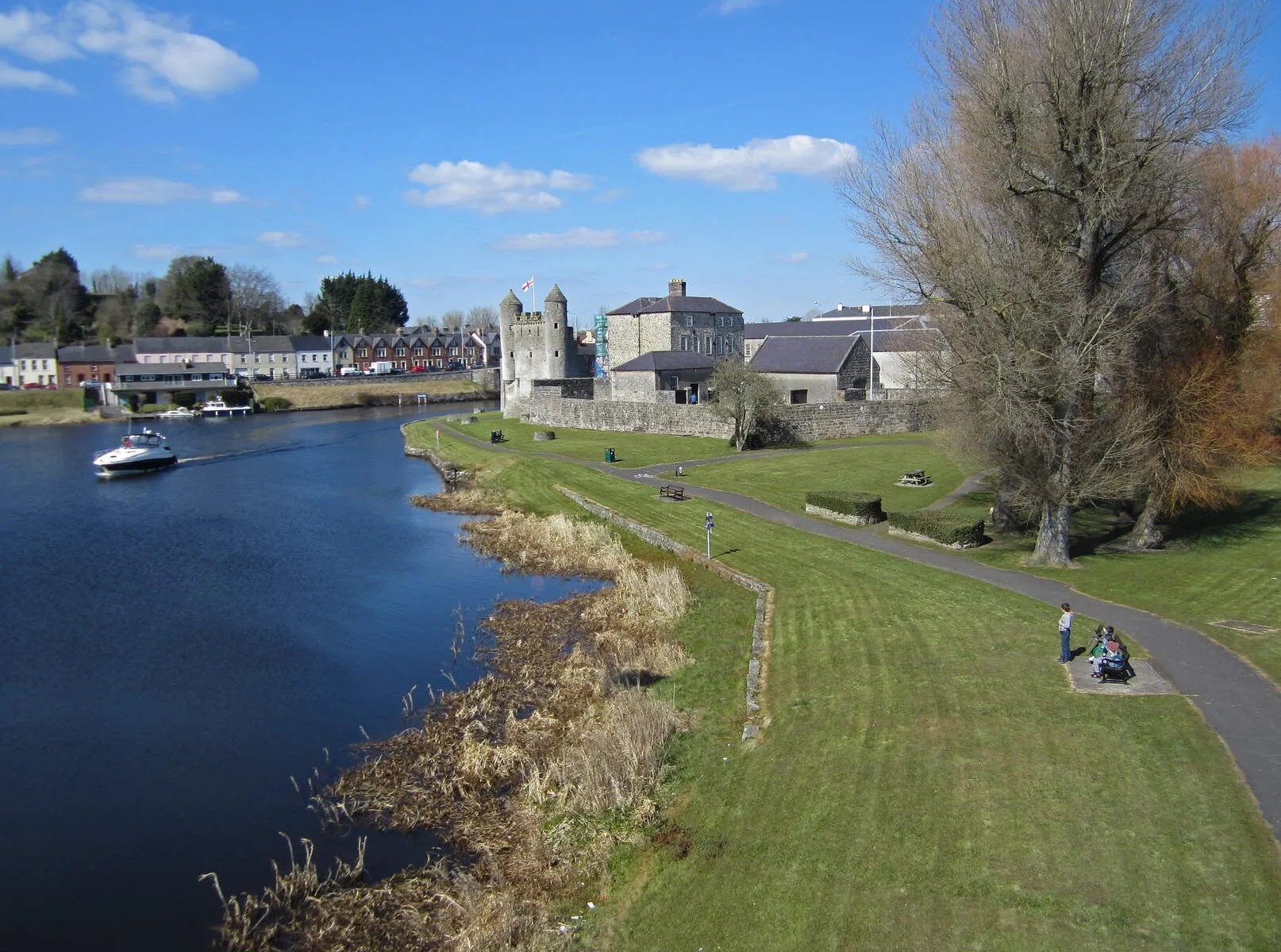
Enniskillen Castle
Historic 15th-century castle housing the Fermanagh County Museum and Inniskillings Museum. Features exhibits on local history, military heritage, and a scenic watergate.
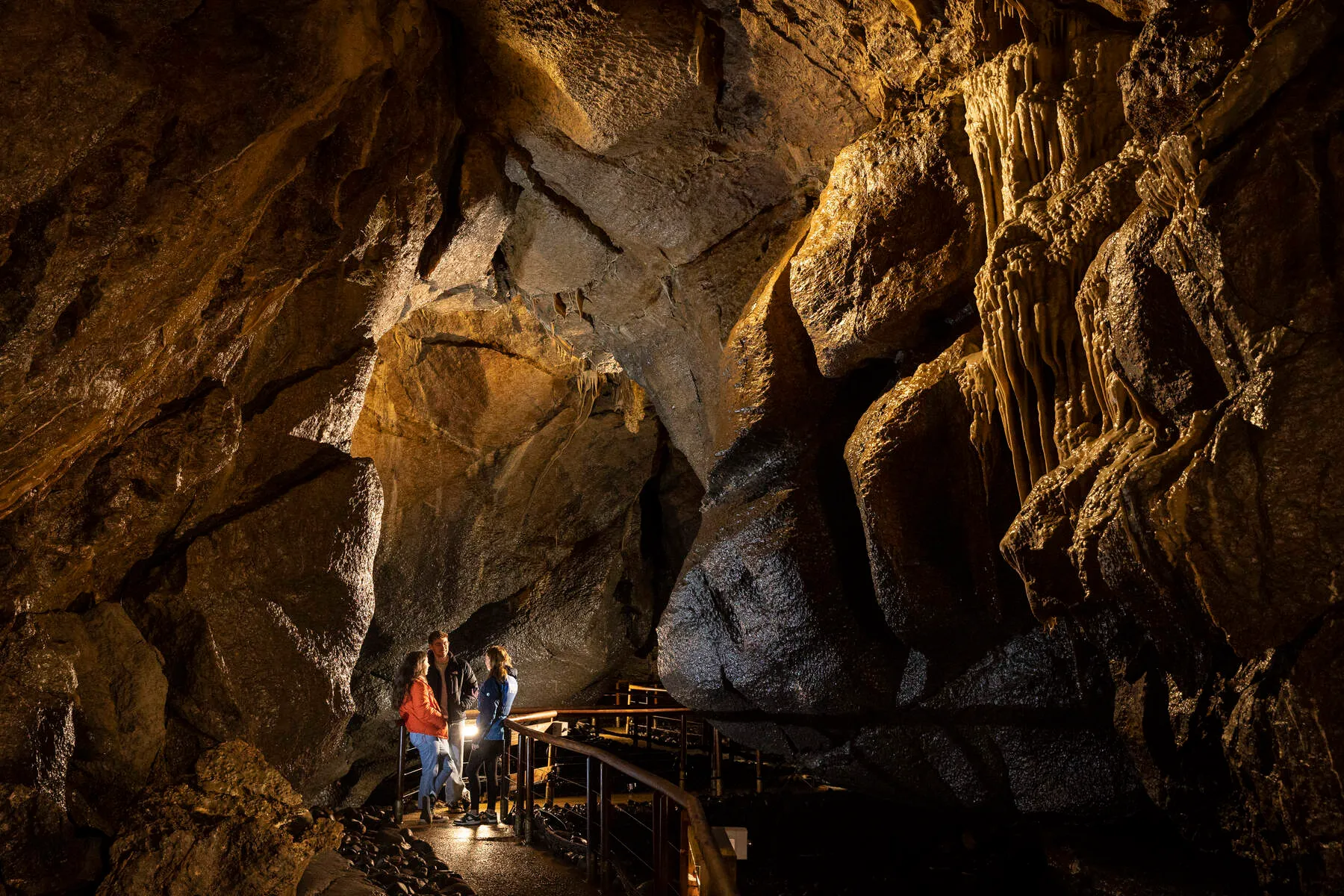
Marble Arch Caves Global Geopark
UNESCO-recognized karst landscape featuring underground rivers and caves. Includes guided tours of the Marble Arch Caves and the dramatic Cuilcagh Boardwalk Trail ('Stairway to Heaven').
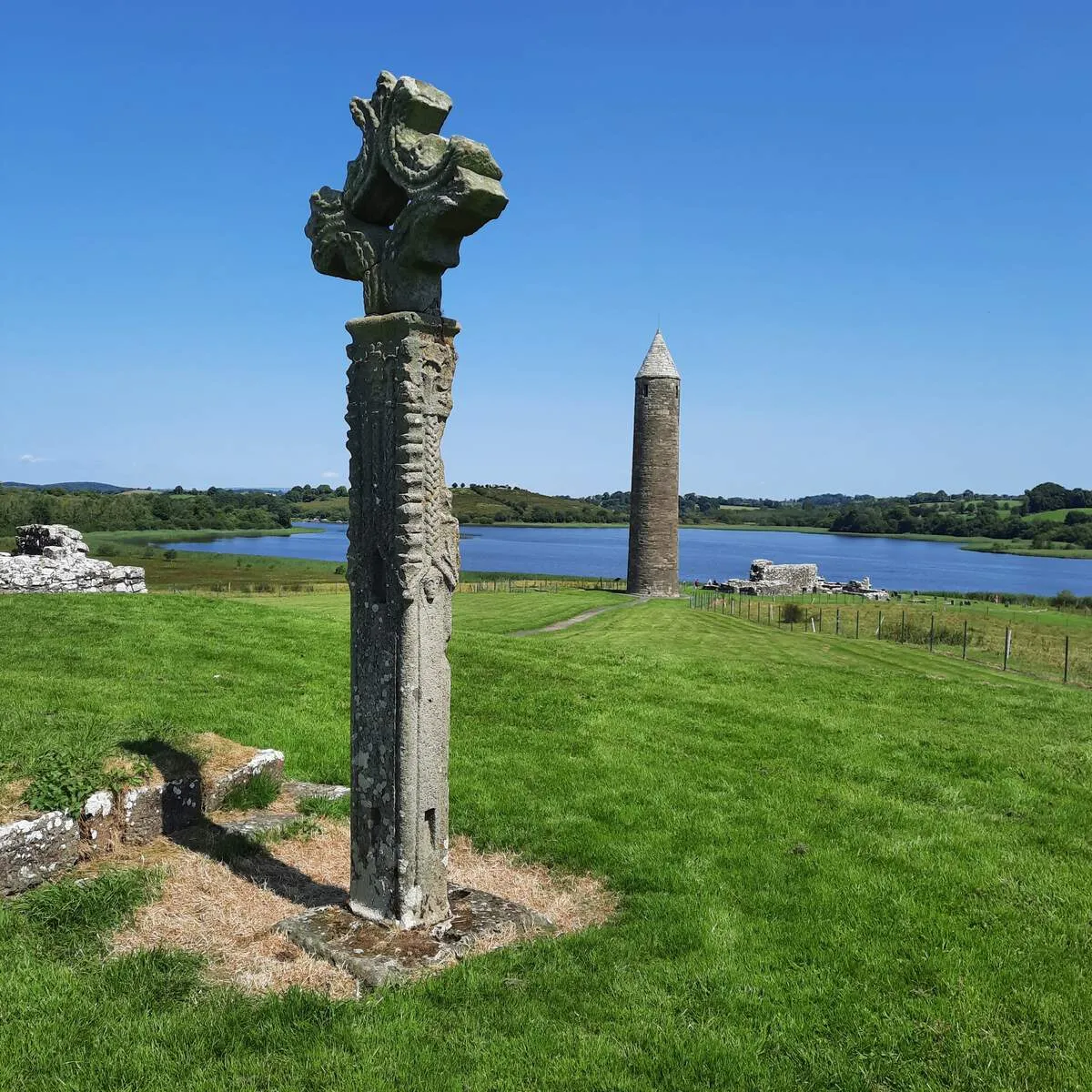
Devenish Island Monastic Site
Ancient monastic ruins dating to the 6th century, including a round tower and medieval church. Accessible by boat from Trory Jetty.
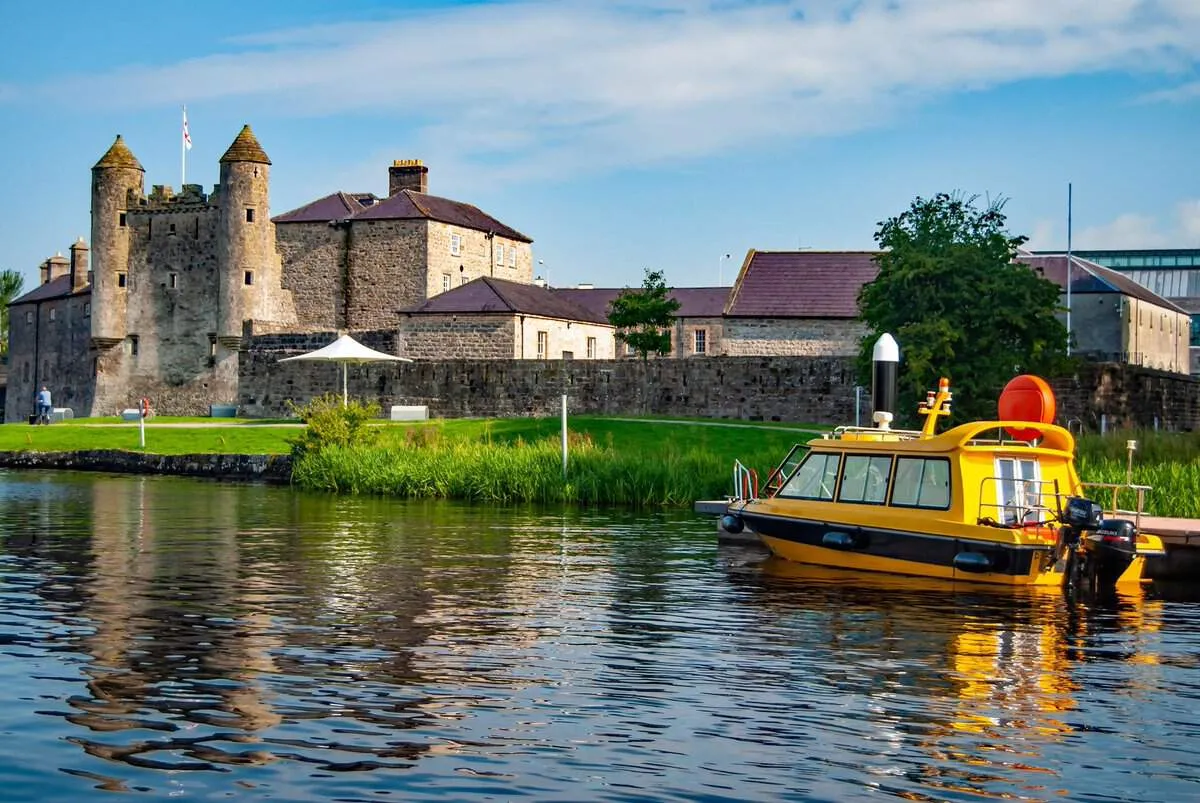
Lough Erne & Islands
Scenic waterway with over 150 islands offering boating, angling, and visits to historic sites like White Island's stone carvings.
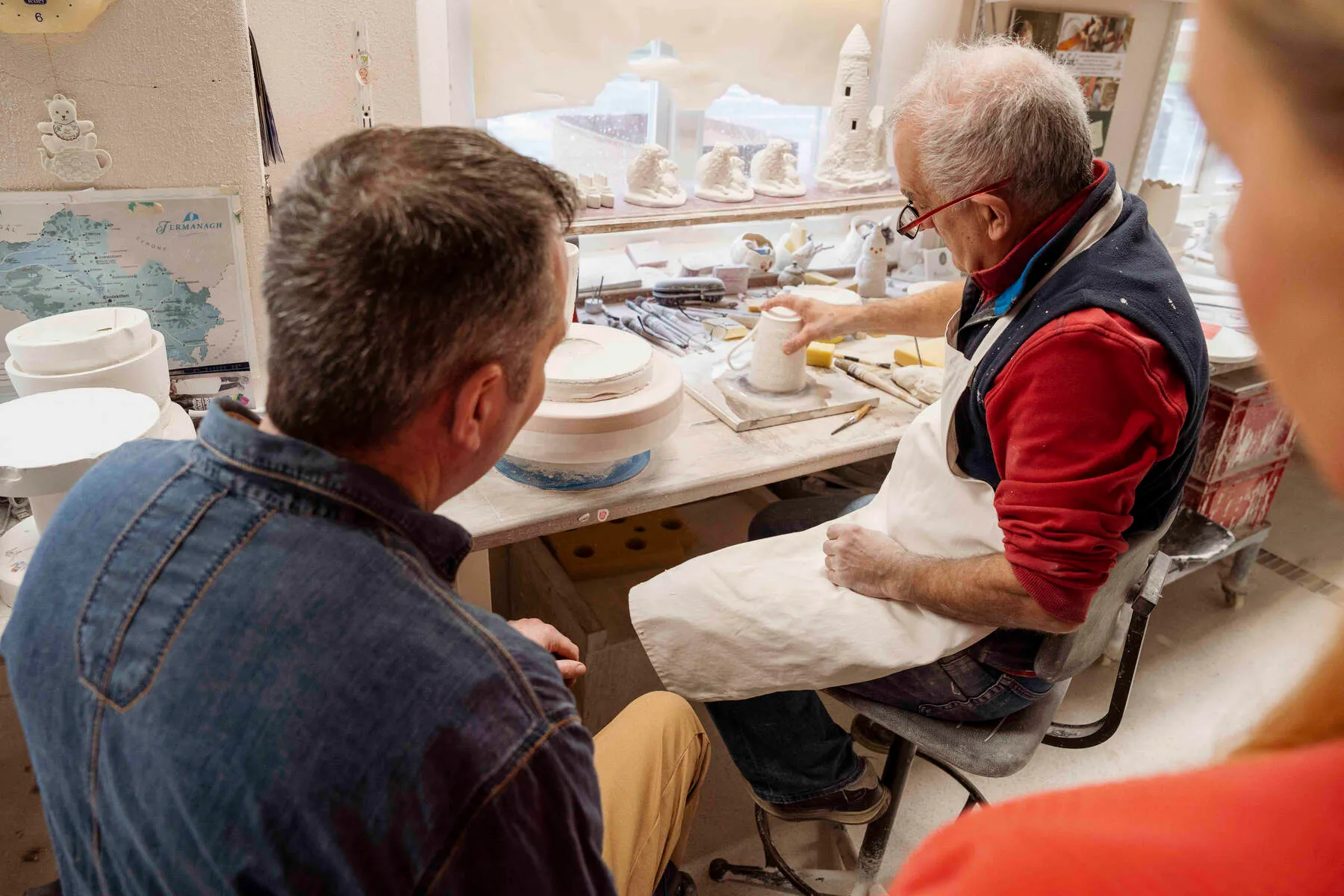
Belleek Pottery Village
World-famous pottery village since 1857. Tour handcrafted porcelain workshops and browse intricate giftware displays.

Castle Coole Estate
Neo-classical mansion with Palladian architecture. Features guided tours, walled gardens, and wildlife trails.
Cuilcagh Boardwalk Trail
Stunning mountain hike to 668m peak featuring steep staircases and panoramic views of both Northern Ireland and the Republic.
Florence Court
Georgian mansion with art collections, walled gardens, and sustainable initiatives like their organic kitchen garden.

Share Discovery Village
Outdoor adventure park offering water sports, ropes courses, archery and a floating play area on Lough Erne.
St Macartin's Cathedral
19th-century church with notable stained glass windows and an 80ft bell tower overlooking Enniskillen town.

Erne Water Taxi
Boat tours providing access to Lough Erne's islands including Devenish and White Island historic sites.
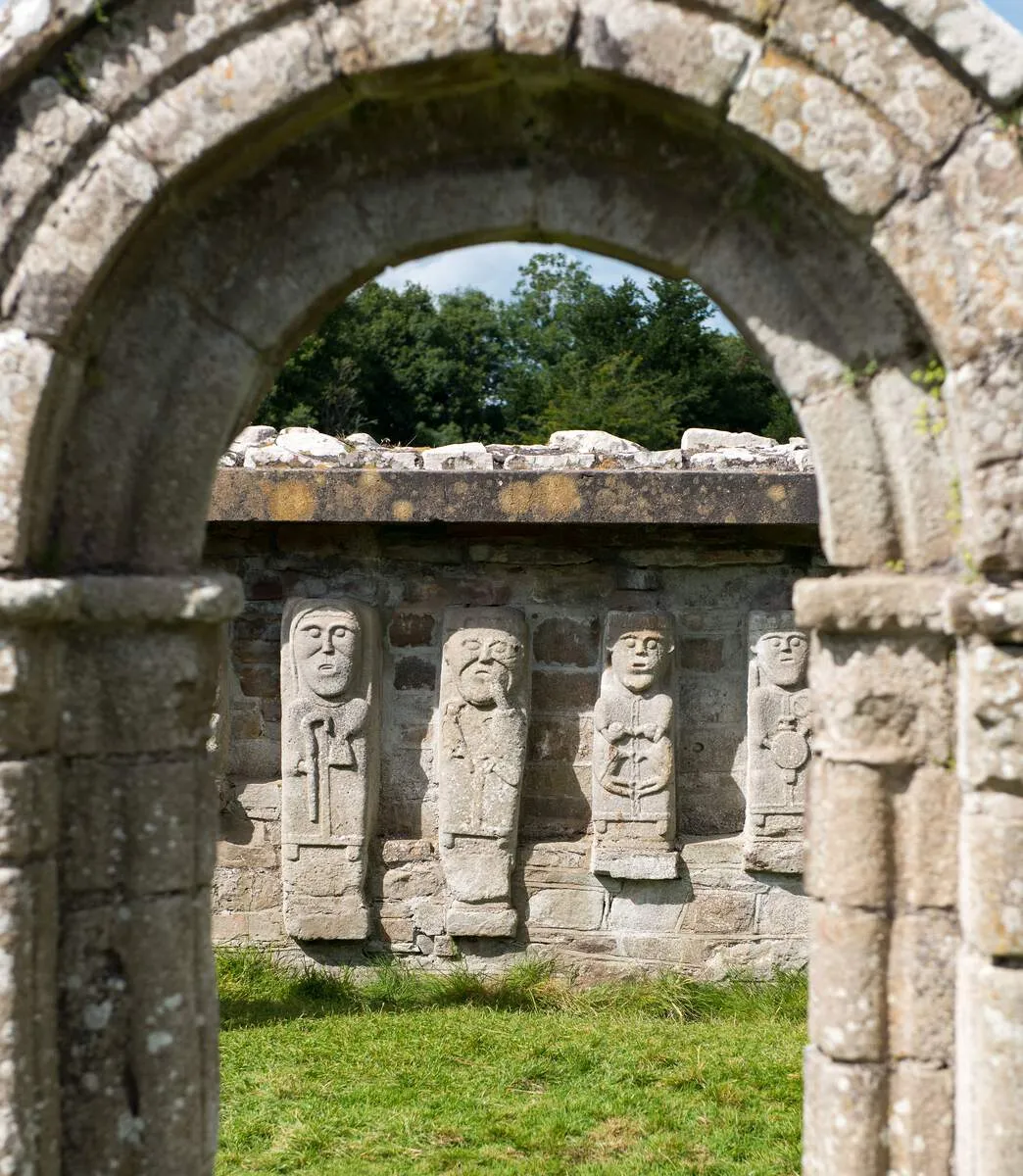
White Island Stone Figures
Ancient monastic site with mysterious two-faced stone carvings on an island in Lough Erne.
Headhunters Barber & Railway Museum
Quirky combination of a barber shop and Irish railway memorabilia museum with vintage artifacts.
Crom Estate Woodland Trails
Ancient woodland with trails leading to Old Crom Castle ruins and seasonal wildflower displays.
Getting There
By Air
-
The nearest airport is Belfast International Airport (BFS) or George Best Belfast City Airport (BHD), both of which are approximately 1-2 hours from Enniskillen by car or taxi.
-
Dublin Airport (DUB) is also an option, with a journey time of around 2.5 hours to Enniskillen.
By Bus
-
Goldline Express 261 runs from Belfast Europa station via Lurgan and Dungannon to Enniskillen, taking 2 hours 10 minutes.
-
Bus Éireann 30 / X30 runs from Dublin Busaras and airport via Virginia and Cavan Town, taking 2 hours 40 minutes to Enniskillen.
-
Ulsterbus 94 runs five times Monday-Saturday from Omagh, taking just over an hour.
-
Ulsterbus 95 runs from Clones via Lisnaskea, taking around an hour to Enniskillen.
By Car
-
From Belfast, take M1 onto A4, approximately 1 hour 40 minutes.
-
From Dublin, take M3 / N3 through Cavan, becoming A509 at the border, and reckon just over two hours.
-
Enniskillen is accessible via the A46 and A4 roads, which connect to the M1 motorway.
By Train
-
The nearest train station is in Portadown or Sligo, from where you can take a taxi or bus to Enniskillen.
-
There is no rail network connected directly to Enniskillen.
By Boat
-
Enniskillen is on the navigable River Erne, linked by waterways to the rest of Ireland.
-
With your own boat, you could even get here from Dublin, Waterford, Limerick, and Athlone. However, there are limits on how far you may take a hired boat.
Events & Festivals 2025
There are currently no events listed. If you would like to add an event, please contact us.
History
Enniskillen's history dates back to the 15th century when it was a strategic stronghold of the Maguire clan. The town's name comes from the Irish "Inis Ceithleann", referring to Cethlenn, a figure in Irish mythology who attempted to swim across the River Erne after being wounded in battle. According to legend, she never reached the other side, and the island was named in her memory.
Enniskillen Castle, founded by Hugh 'The Hospitable' Maguire in the early 15th century, played a crucial role in the town's development. The castle withstood numerous sieges and battles during the 16th and 17th centuries, including a siege by English forces under Captain John Dowdall in 1594. In 1612, King James I granted the town and surrounding lands to William Cole, an English soldier and administrator, marking the beginning of the Plantation of Ulster.
During this period, Enniskillen underwent significant transformation, becoming a major center for trade and commerce. The town's strategic location on the River Erne facilitated the transportation of goods and resources, earning it a reputation as a key commercial hub. Enniskillen also played a pivotal role in the Irish Rebellion of 1641, with Rory Maguire leading the rebel forces.
The Williamite War saw Enniskillen resist Jacobite forces, with the town's garrison and local volunteers successfully defending against repeated attacks. The Battle of Newtownbutler in 1689 was a decisive victory for the Williamite forces, solidifying Enniskillen's reputation as a bastion of Protestant resistance.
In the 18th and 19th centuries, Enniskillen served as a primary recruiting ground for the Inniskilling Fusiliers and Dragoons regiments. The town's military presence continued through World War II, with the castle barracks playing a significant role in the war effort. During World War I, 67 soldiers from Enniskillen perished, their memories and stories preserved in the town's memory map.
The Troubles had a profound impact on Enniskillen, with the IRA bombing in 1987 claiming the lives of 11 civilians. However, the town's response to the tragedy was one of resilience and unity, with the community coming together to support the victims' families and promote reconciliation. Today, visitors can explore Enniskillen's rich history at the Fermanagh County Museum and the Inniskillings Museum, both located within the castle walls.